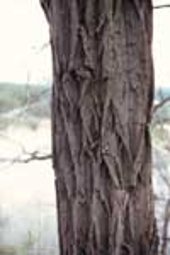I was trying to figure out which
Black Locust cultivars do what and stumbled on to this expertly written summary article today.
https://iforest.sisef.org/contents/?id=ifor4254-016
I'll capture the best of it in case we don't get to see it anymore.
"Black locust breeding programmes aimed at improving
wood quality, increasing biomass production for
energy purposes and enhancing drought tolerance have been ongoing in many countries for decades ([33], [49], [60], [1], [87]). Hungary is currently the leading European country in black locust genetic improvement programmes ([77], [41], [1], [2]). On the other hand, significant breeding activity has also emerged in China, which has developed over 100 newly-bred black locust cultivars ([21]).
Black locust breeding accelerated in the middle of the 20th century in several countries, particularly in non-native regions. Countries in these regions include Hungary ([40]), Romania ([60]), Germany ([80], [79]), Bulgaria ([38]), Greece ([16]) and China ([21]). In general, southern European countries have used the species for fodder and energy crops, while the north focuses more on wood products ([61]). Since
honey production is a significant aspect in Central Europe ([40]) and South Korea ([46]), efforts in these places follow trends associated with that black locust breeding aspect.
Much of the research in South Korea has sought to improve the black locust morphology and the cytological characteristics of tri- and tetraploid varieties, whether spontaneously or induced by colchicine ([36]). According to Keresztesi ([40]), some cultivars in South Korea were bred for forage, mainly by mutational breeding, resulting in a lack of thorns, increased leaf area, and high protein content. The use of polyploid black locust for forage breeding also arose in Hungary ([43]).
. The first was the breeding of ship mast-type black locust varieties started by Béla Keresztesi and his co-workers in the middle of the 20th century and dominated by the selection of superior plus
trees (selection breeding method) from various stands in Hungary, resulting in several black locust cultivars such as ’Üllöi’, ’Nyírségi’, ’Jászkiséri’, ’Kiskunsági’, and ’Appalachia’ (the last is the only one introduced directly from USA). These cultivars are mainly clonal mixtures of numerous superior trees and have been proven in many experiments ([40], [69], [76], [77], [78], [1]). The results show that some of these cultivars (’Jászkiséri’ and ’Üllöi’) can be grown on semi-marginal sites, increasing the stem quality by 12-15% on average
Hungarian forestry nurseries. As a result, the ’Turbo OBE’ candidate cultivars were selected after numerous consecutive field experiments ([63]). These candidates are suggested for biomass purposes and fast-growing industrial wood plantations
The genetic improvement of black locust: the most important varieties, cultivars and clonal selections
To sum up and complement the previously described breeding efforts, we will review the most significant historical steps in black locust genetic improvements in chronological order by country.
The first cultivar (cv. ’Inermis’) was produced in France in 1804, and several other cultivars have been cultivated since: ’Tortuosa’ (1810), ’Crispa’ (1825), ’Pyramidalis’ (1839), ’Unifolia’ (1855), and ’Semperflorens’ (1871) ([14]).
Two cultivars recorded in Great Britain are ’Microphylla’ (1813) and ’Macrophylla’ (1824) ([14]).
Despite its North American origins, black locust selection in the USA only started in 1930 ([55], [36], [14]). ’Dean Rossman’ is one variety produced in New York in 1990, but ’Burgundy’ (1996), ’Monophylla pendula’ (1996), ’Purple Crown’, ’Purple Robe’, ’Rehderi’ and ’Umbraculifera’ are also associated with North America ([14]).
Breeding programmes began in Germany in 1950 ([79]) and have produced several cultivars. These include ’Aurea’ (1859), ’Bessoniana’ (1859), ’Monophylla Fastigata’ (1880), and ’Pendulifolia’ (1860) ([14]).
Black locust cultivation in Hungary started in the 1960s ([40], [76]). In 2021, the recognised and still available black locust cultivars are ’Appalachia’, ’Kiskunsági’, ’Jászkiséri’, ’Nyírségi’, and ’Üllöi’ ([59] - see also Tab. S1 in Supplementary material).
Breeding in Romania also started in 1960. Five plantations from five zones covering the whole country were designated for breeding purposes. A total of 25 plus trees (field selection of superior trees compared to the overall stand) were selected ([67]). One noteworthy variety is R. pseudoacacia var. oltenica, which has outstanding wood production properties ([12], [23], [8], [60]).
Black locust breeding in Bulgaria began in the 1970s ([38]), and two clones (’Srebarna’ and ’Tsarevets’) have been documented. Both genotypes were selected from open-pollinated families in north-central Bulgaria to improve the lineage ([82]).
China has cultivated over a hundred superior clones and varieties since the 1970s. A recent study found that 110 of the 123 recognized varieties could be genetically distinguished using SSR DNA markers ([21]).
Although there are no exact records of ’Frisia’ black locust (R. pseudoacacia ’Frisia’) breeding in Australia, the variety was popular there in the 1980s and is still found in Australian gardens and landscapes today. Its other variety - the mop-head acacia (R. pseudoacacia ’Umbraculifera’) - has become a similarly famous and popular tree among residents ([29]).
Black locust breeding in Poland started in the 1990s, with two selected plantations resulting in 34 outstanding specimens and two seed-producing stands ([42], [95]).
In Greece, 30 genotypes from nine open-pollinated families were obtained; however, the initial date of black locust breeding is unknown. From this assortment, 12 individuals were further tested, with particular importance given to clones of R. pseudoacacia var. monophylla: ’A-7B(6)’, ’B-2B(3)’, ’A-B(3)’, and ’A-8A(3)’ ([3]). One advantage of these clones is that they were selected in a drier, warmer climate and will have a better chance of surviving climate change-induced warming in more northern areas in the future ([16], [3]). In another survey ([18]), 13 clones from this variety were selected because of their outstanding growth abilities, green foliage retention in autumn and smaller thorns. In Dini-Papanastasi & Papachristou ([17]), clones ’B-A(13)’ and ’B-6A(

’ performed best in terms of forage production.
There is no record of when breeding efforts began in South Korea. According to Lee et al. ([46]), 63 clones were selected, and the selection from Ganghwa had the highest nectar production capacity.

 3
3




 ’ performed best in terms of forage production.
’ performed best in terms of forage production.





 1
1




 1
1







